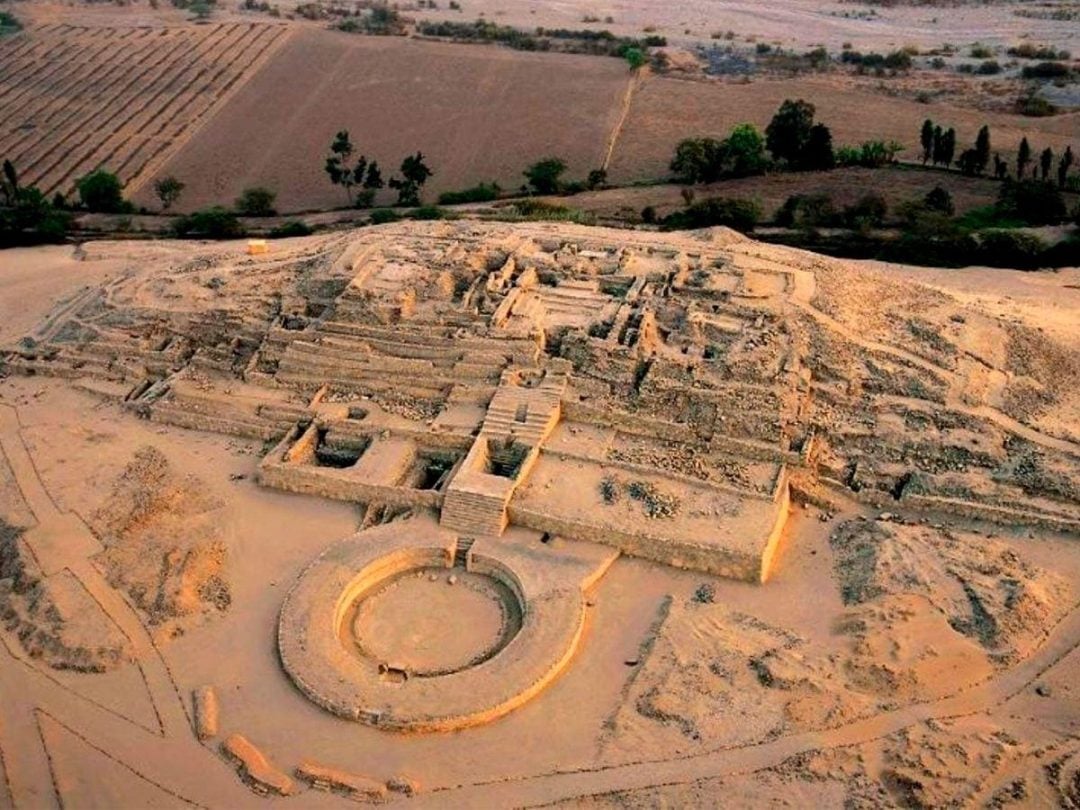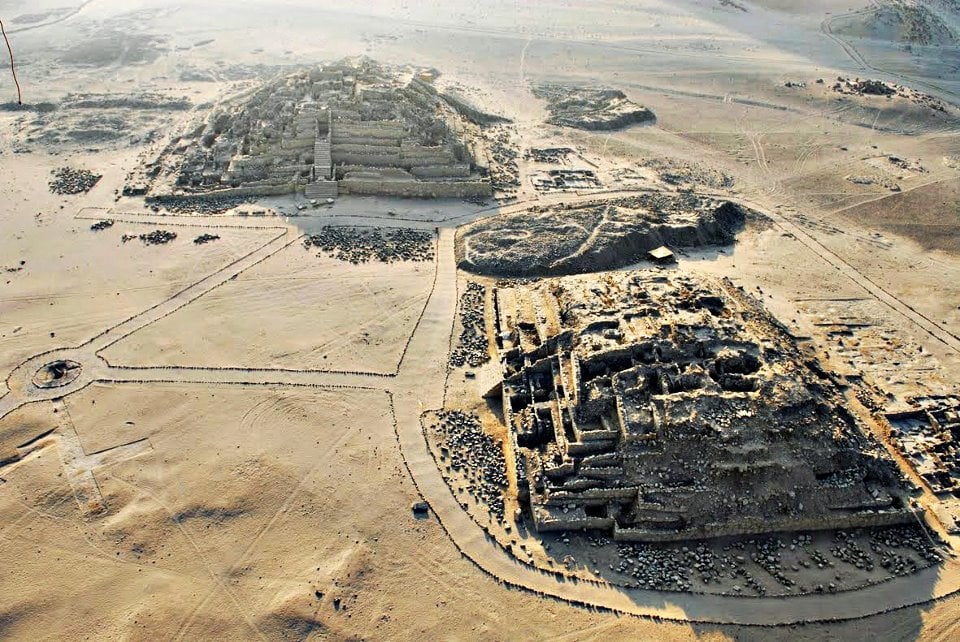The Sacred City of Caral in Peru
With approximately 5,000 years old, the City of Caral, located in the Supe Valley, 200 kilometers north of the city of Lima, is considered the oldest city in all of America and has been recognized by UNESCO as a World Heritage Site. Humanity in June 2009.

The civilization of Caral-Supe or Norte Chico was contemporary with other civilizations such as Mesopotamia, Egypt, India, China and Mesoamerica, which are recognized as the centers of world culture.
Caral occupies around 65 hectares. Research carried out since 1994 by the Caral-Supe Special Archaeological Project directed by Dr. Ruth Shady shows that 5,000 years ago (3,000 BC) Caral was a city of monumental pyramids. In her book “The Sacred City of Caral-Supe at the dawn of civilization in Peru” (1997), Shady, who excavated at Caral beginning in 1996, supports the pre-ceramic antiquity of Caral.
Through radio carbonic tests it has been confirmed that the city has an average age of 5,000 years, despite the fact that in the rest of America urban development begins 1,550 years later. This finding has changed the schemes on the appearance of ancient civilizations in Peru.

According to Shady, Caral was a city-state with a theocratic organization that can be considered the cradle of Andean civilization.
Its construction required a high degree of technology and social organization. The buildings of Caral have the shape of a pyramid and would have been used by the rulers as the center of their religious, political or economic activities.
As it is represented in the pyramids, religious monuments with squares, atriums, and altars, religion was the means of cohesion and coercion that allowed control of the population, the production of goods, and their circulation.
Among the new findings presented by Ruth Shady’s team in 2005, a textile remains interpreted as a quipu is included, which would imply that this data recording system is almost five thousand years old and not fifteen hundred years old as previously thought.
The reconstruction of a possible inhabitant of the city of Caral based on the skull of a sacrificed boy found during the excavations was also presented.
